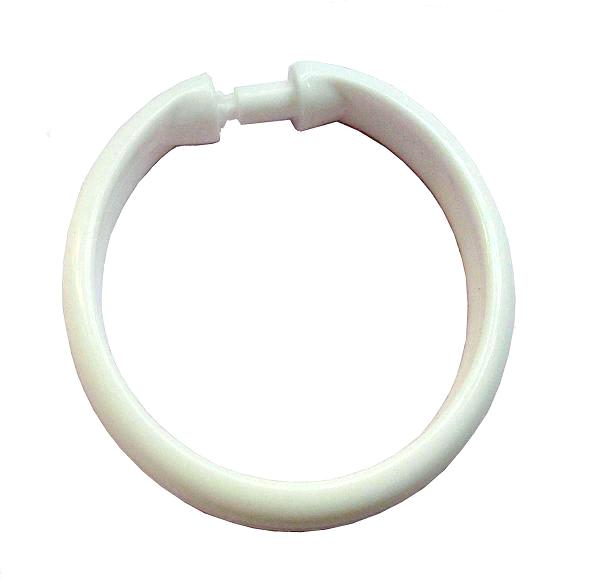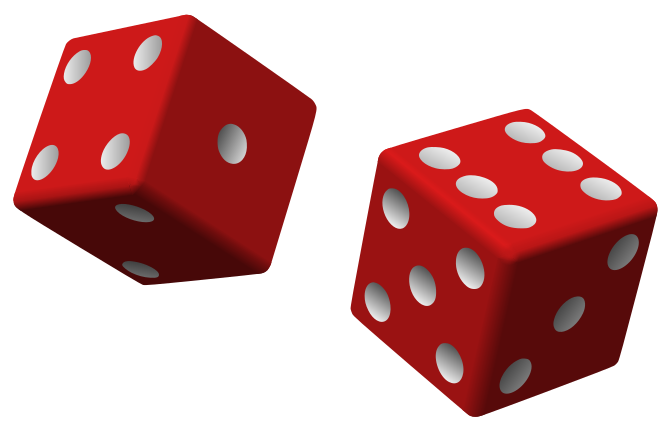AT OFF THE SHELF!
Bathtub Mat
-With grip and can be cut to size
-Similar to a move and sit cushion
-You could put a binder or book under it to position it on a slant
-This could be used with an individual who can’t sit still in their seat because of behaviour or attention challenges.
-This AT could be used with a student who is very capable of completing the class work, but needs some movement to stay focused in the classroom.
-It can also be used for students with bad posture to help keep them in balance.

Transparent Ruler
-Flexible
transparent ruler with limited writing on it
-Can be
utilized for reading, which allows a student with reading disabilities such as
Dyslexia, to isolate a word or sentence, to help with comprehension.
-These
flexible rulers are also good as fidget toys, for students with attention
difficulties.


Shower Ring
-Shower
ring or key loop can be used for students (or anyone) who have difficulty grasping smaller, irregular items.
-These
could be hooked to anything, such as a toy, or even a student’s jacket zipper
-Helpful
with a person who has fine motor difficulties

Tupperware container with dice
-See
through Tupperware container with dice inside can be used for students to
participate in games or to practice math skills such as addition
-Helpful
for students who have difficulty with fine motor skills, such as grasping
smaller objects
-This
option allows the individual to participate quickly and easily, to keep up with
peers


Pipe Cleaners
-Pipe
cleaners could be used to wrap around a pencil for grip for students with fine motor challenges
-The
pipe cleaners can layer any writing utensil and can be easily removed
-Can
also be used as a fidgety toy for students who have difficulty focusing on a
task
-A
simple, affordable solution

TASK B
AT INVENTION!
Materials needed:
-Squeeze bottle (dollar store)
-Pencil (or crayon, pen, etc)
-Rubber bands
-Sand and rocks (or sugar, or nuts as weights)
I
have invented a low tech AT device which allows individuals with fine motor
skill difficulties to be able to easily grasp a pencil, crayon, or other small writing
utensil. The device I created will allow
students to squeeze the bottle to a size of their liking, by adjusting the
amount of air inside.
To
create the AT, I purchased a squeeze bottle at the dollar store and cut the tip
off to create a hole large enough to hold a pencil. The pencil fit in so tightly, one would have
to bang on it to pop loose. It is very
easy to switch the pencil with another one, or a crayon. The only downfall is the hole must stay the
same size or the original pencil will not fit in again. You could also tape these in place.
To
add to this, I wrapped rubber bands around the bottle for gripping purposes, so
it would not slide out of the individual’s hand. A rubber band could be used for gripping on
any writing utensil or object.
Fine motor
skills can create challenges for students trying to form their fingers around a
pencil in the correct way. This can also
be a challenge for students with low muscle tone. A weighted pencil can be beneficial for a
student who writes too light. This would
prevent these individuals from becoming tired easily and increase their
handwriting, making it legible. To
create a weight, I put rocks and sand in the container. This could be adjusted, depending on the
student and access to material.

AT INVENTION #2

-Sponge (dollar store)
-Flexible cutting boards (dollar store)
A second AT I decided to
create is a page stand. It isn’t sturdy,
but displays paper or cards on it. This
could be used for students with physical disabilities, who are in a wheelchair,
or cannot bend over to follow along on a paper.
It could be used for vision challenges as well, allowing individuals to
have notes from the board or overhead directly in front of them.
To create this, I bought a
car sponge and flexible cutting board at the dollar store. With a knife, I sliced a hole through the
middle, as close to the bottom as possible, without cutting right through the
sponge. I then placed the cutting board
into the crack of the sponge. Paper or
cards can be squeezed into the hole. The
size of the crack made would depend on the use of the stand (looseleaf or
cardboard).
TOY ANALYSIS
Shape-O

Evaluator
name: Shauna
McNeil (Digout)
Store: Tupperware
Disability
Category: Rating: **** or * stars
Physical ___****___
Sensory ___**___
Communicative ______
Cognitive ___****___
Toy
Company:
Price: _$
35_____
# Pieces: __10____
Washability: __Easy____
Storability: __Easy___
Directions: __Easy____
Play Locations: __Movable____
Adjustability: __----____
Levels of Play: __Basic____
Batteries: __No____
Description
general:
The Shape-O Toy can be used as a classic rattle,
shape-sorter and counting toy. It can be
used with infants and the use can progress as they age. The toy opens up and is filled with shapes. It has open spaces for the infant to grab and
shake as a rattle. The shapes come out
and can be sorted into groups which are similar to each other, and placed in
the correct hole which matches the shape.
This can help develop coordination and dexterity. The shapes can be used to organize and
count. Each piece has a number on one
side and the corresponding number of dots on the other side to teach number
recognition and counting.
APPLICATIONS
FOR CHILDREN WITH DISABILITIES
Physical Rating: ****
Description
|
This
toy is the perfect size to be transported from place to place. All the pieces fit inside so they can’t be
lost. It could be used on a person’s
lap or table, therefore, suited for those individuals in a wheelchair. The shapes are solid, large shapes which
are easy to grasp.
|
Skills
|
Fine
motor skills and dexterity are built upon as the child grasps the object to
rattle, or a shape and tries to place it in the matching hole. If the child is experiencing difficulty
with this, you could use smaller shapes (bought at dollar store) and work
your way up to the larger shapes.
|
Play
Ideas
|
The
child could use it for counting and or making patterns.
|
Adaptation
Ideas
|
You
could buy smaller shapes from the dollar store which match (they are basic
shapes) the holes and are easier to use with children who have fine motor
skill difficulties.
|
Sensory Rating: **
Description
|
The
blocks are large and colourful which would be stimulating for some
children. They are also solid and
plastic. A child with visual
impairments could easily feel the shape to identify its name. The sound it makes as a rattle would be
stimulating as well, and is also a reward when a shape is successfully placed
in the correct hole.
|
Skills
|
Colour
recognition skills are built upon.
Gross motor skills are strengthened as the child lifts the shape and
tries to squeeze in into the correct hole.
|
Play
Ideas
|
Any
child could find a use for this, even if visually or hearing impaired. A child can feel the shape and the hole to
identify a match. It can be
transported anywhere, and used as a ball to move around as well.
|
Adaptation
Ideas
|
You
can add other objects to the ball, such as a bell, to add to the noise when
shaken.
|
Communicative Rating:
Description
|
Children
could talk and discuss the shapes, count together, or roll the ball back and
worth. Children to describe the
shapes to an adult, or practice counting and grouping.
|
Skills
|
Children
can work on their communication skills, describing and counting the shape
together.
|
Play
Ideas
|
Children
can use the ball to practice counting together, communicating about the color
and type of shape. They can also use
the toy to roll back and worth along the carpet to each other.
|
Adaptation
Ideas
|
Children
could trace the shapes or create smaller ones together.
|
Cognitive
Rating: ****
Description
|
There
are a few ways to use this toy or build up to using it multiple ways,
therefore, a use can be found for any child: rattling, counting, matching,
etc. Little hand movement is needed to
grasp one of the holes and shake it.
Children can make patterns or line them up in any way. It is attractive and creates noise and will
keep the child stimulated for periods of time.
|
Skills
|
Problem
solving skills are built upon to identify the correct hole to put the shape
in. Precision and motor planning are
needed to put the shape in the correct hole.
Colour and shape recognition, counting (number concept), and memory
are also skills to build upon.
|
Play
Ideas
|
Mental
processes will be built upon as children group the colours or shapes to make
patterns. Fine motor skills and
dexterity are used when the shapes are squeezed into the correct slot, or
hand movement when rolling the ball to a partner or two.
|
Adaptation
Ideas
|
You
could label the shapes with a name or number and do the same with the body to
help children identify the correct hole.
This can be taken off after the child has recognition of the shape.
|
FEATURES
AND BENEFITS CHECK IF APPROPRIATE
X
|
Durable
|
X
|
High
Contrasting Colours
|
X
|
Tactilely
Stimulating
|
X
|
Visually
Stimulating
|
X
|
|
X
|
Inviting
Due to Uniqueness
|
X
|
Open-ended
|
X
|
Innovative
|
X
|
High
quality
|
Detailed
|
|
X
|
Hands
on Approach to learning
|
X
|
Easy
to grasp/hold
|
One-piece
unit
|
|
Upright
position for play
|
|
X
|
Other:
Easy to transport
|
DEVELOPMENTAL
PROCESSES PROMOTED
X
|
Visual
attention
|
X
|
Visual
tracking
|
X
|
Visual
processing
|
X
|
Memory
and recall
|
X
|
Cause
and effect
|
X
|
Action
concepts: in/out, push/pull, on/off, go/stop
|
X
|
Fine
motor
|
X
|
Eye-hand
coordination
|
X
|
Problem
solving
|
X
|
Finger
and hand control and dexterity
|
X
|
Physical
range of motion
|
X
|
Deliberate
finger movements
|
X
|
Precision
|
X
|
Directionality
|
X
|
Wrist
rotation
|
X
|
Hand
and finger grasp
|
X
|
Pointing,
one isolated finger
|
X
|
Motor
planning
|
X
|
Self
esteem
|
X
|
Manual
dexterity
|
X
|
Sequential
thought
|
X
|
Reaching
|
X
|
Strategic
thinking
|
Turn
taking
|
|
X
|
Patience
|
Spatial
relationships – over, under, on, off
|
|
X
|
Reaching/arm
extension
|
X
|
Functional
finger movement and exploration
|
X
|
Coordinated
movement
|
X
|
Sorting
and classification
|
X
|
Early
Literacy
|
Texture
Discrimination
|
|
Object
Permanence
|
|
Tactile
Discrimination
|
|
X
|
Problem
Solving
|
X
|
Directionality
|
X
|
Cooperative
Hand Movement
|
Letter
Recognition
|
|
X
|
Life
Skills
|
Pre-Literacy
|
|
Social
Interaction
|
|
Foot
Placement
|
|
Weight
Shifting
|
|
Core
Strengthening – Trunk Strengthening
|
|
X
|
Colour
Recognition and Identification
|
Word
Recognition
|
|
X
|
Number
concepts
|
X
|
Visual
Acuity
|

No comments:
Post a Comment